renewal
a place for people experiencing homelessnessBallard neighborhood, Seattle, Washington
UW Winter Integration Studio III, 2020
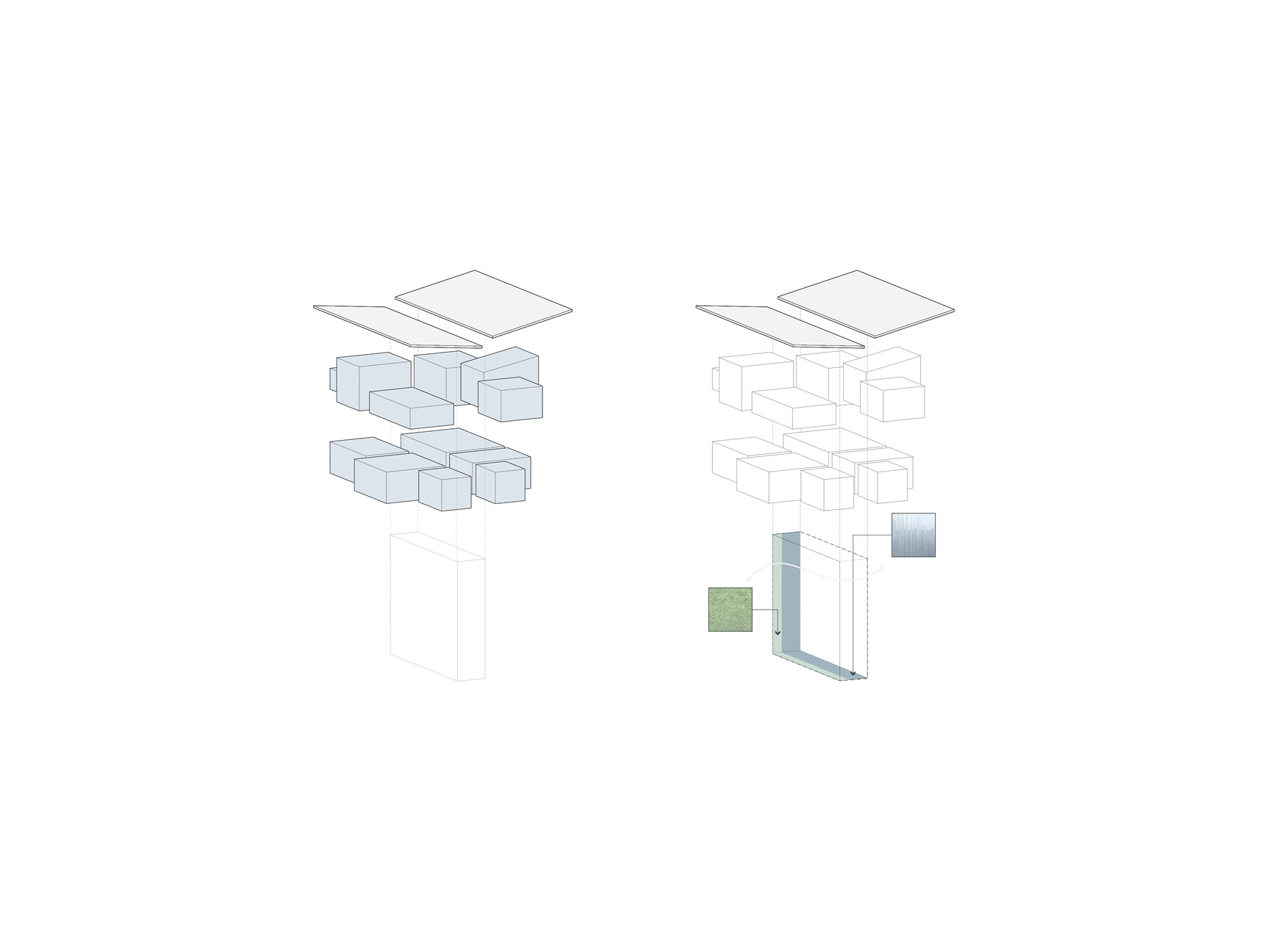

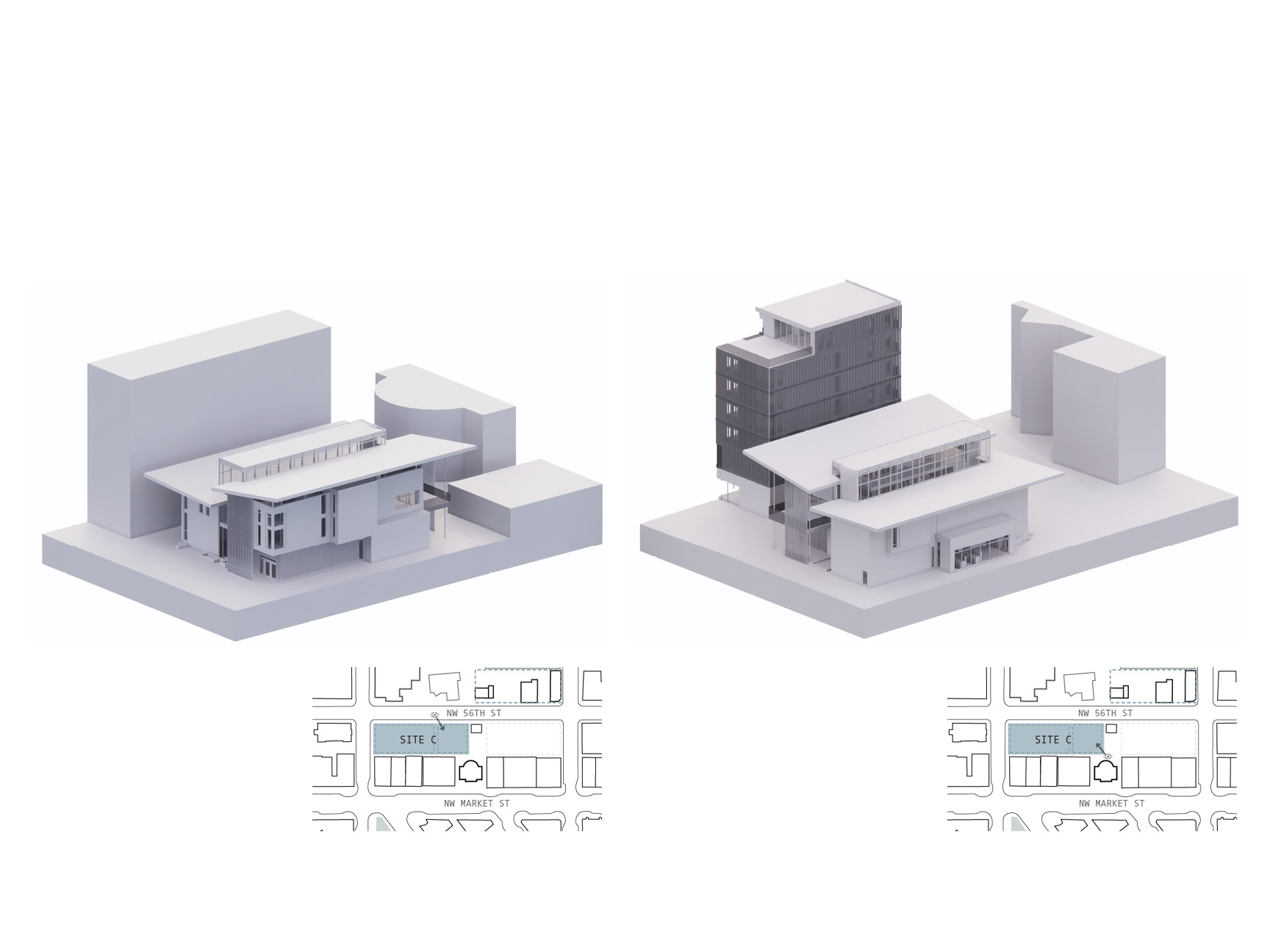

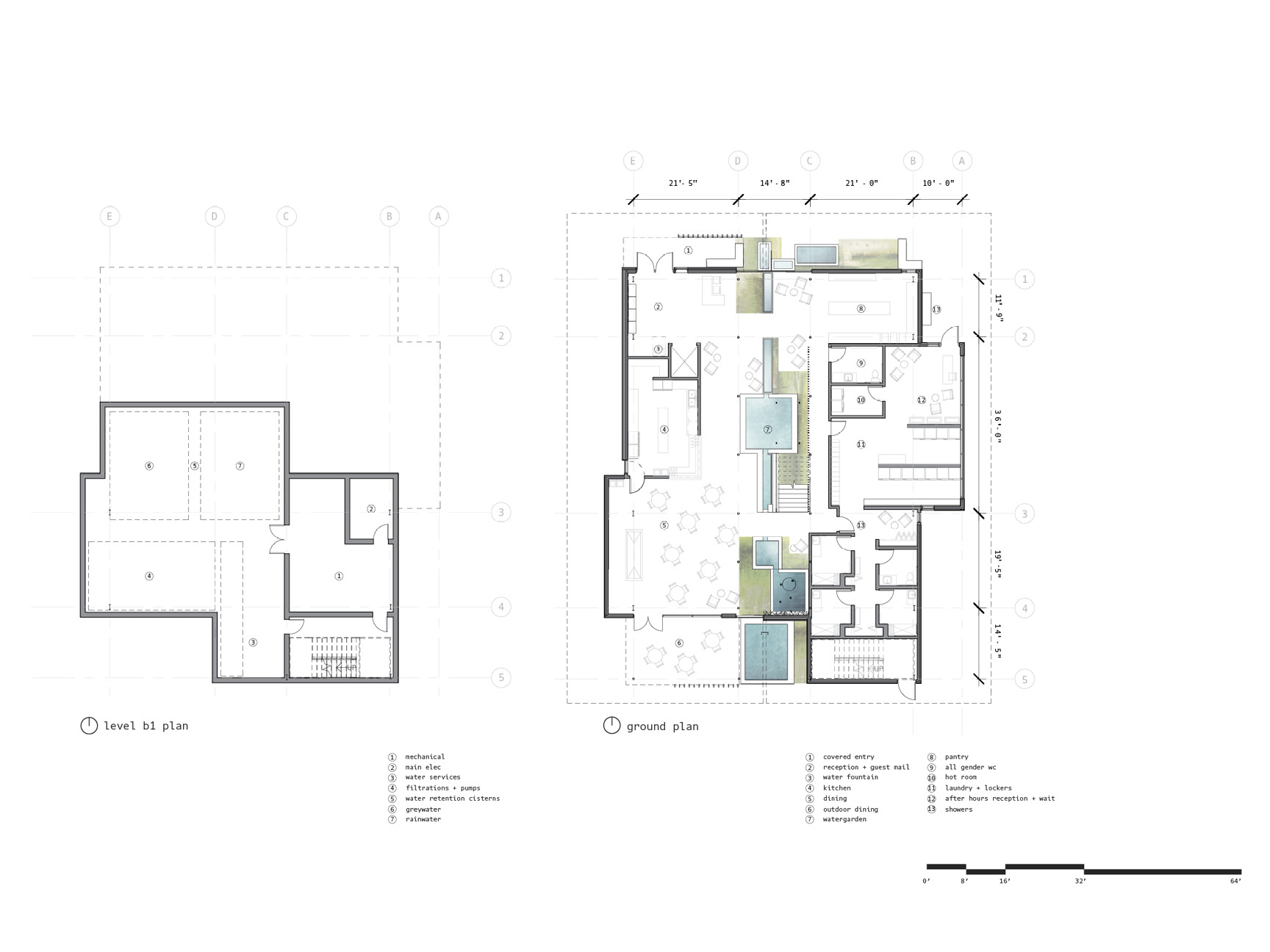
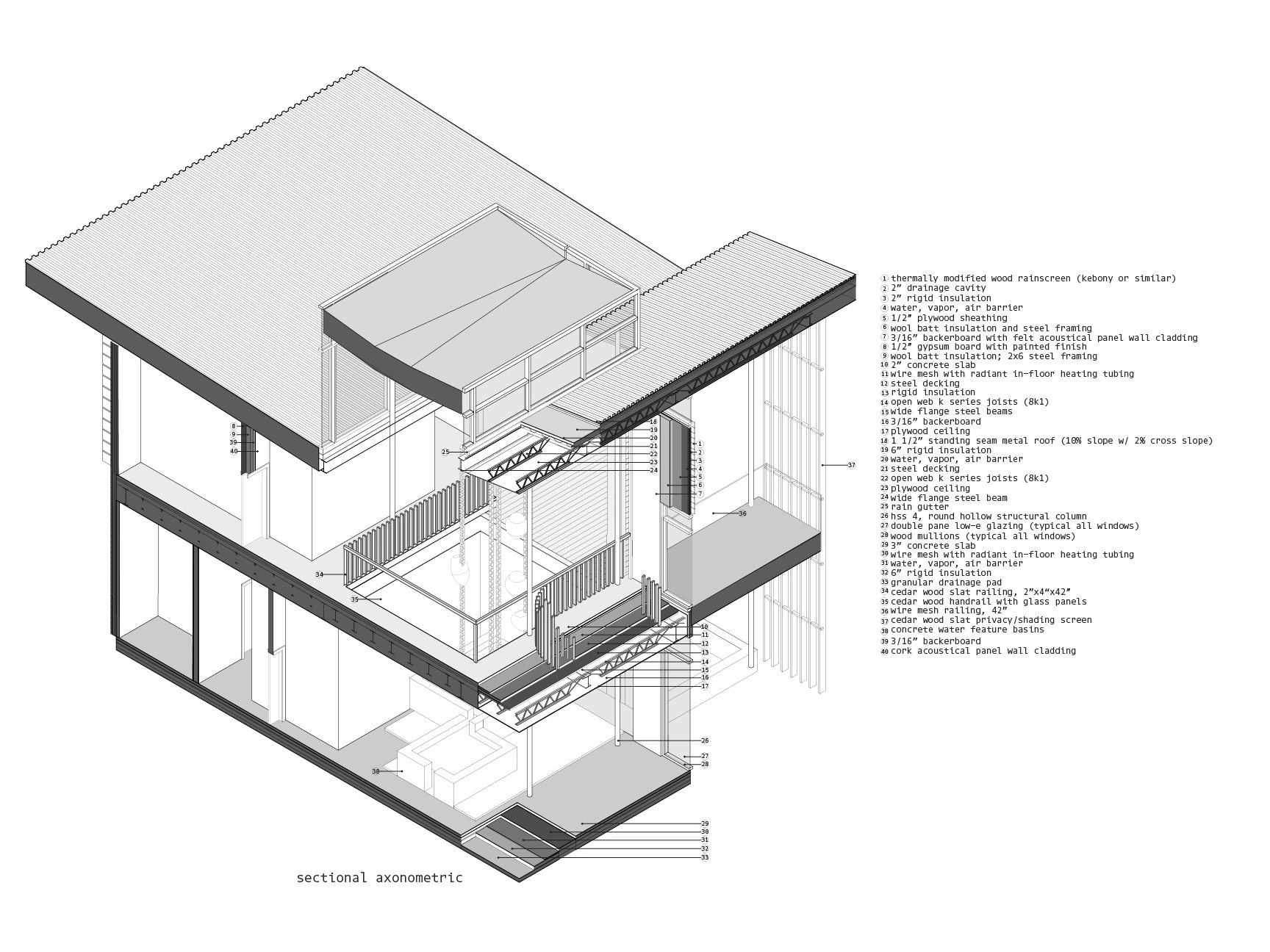
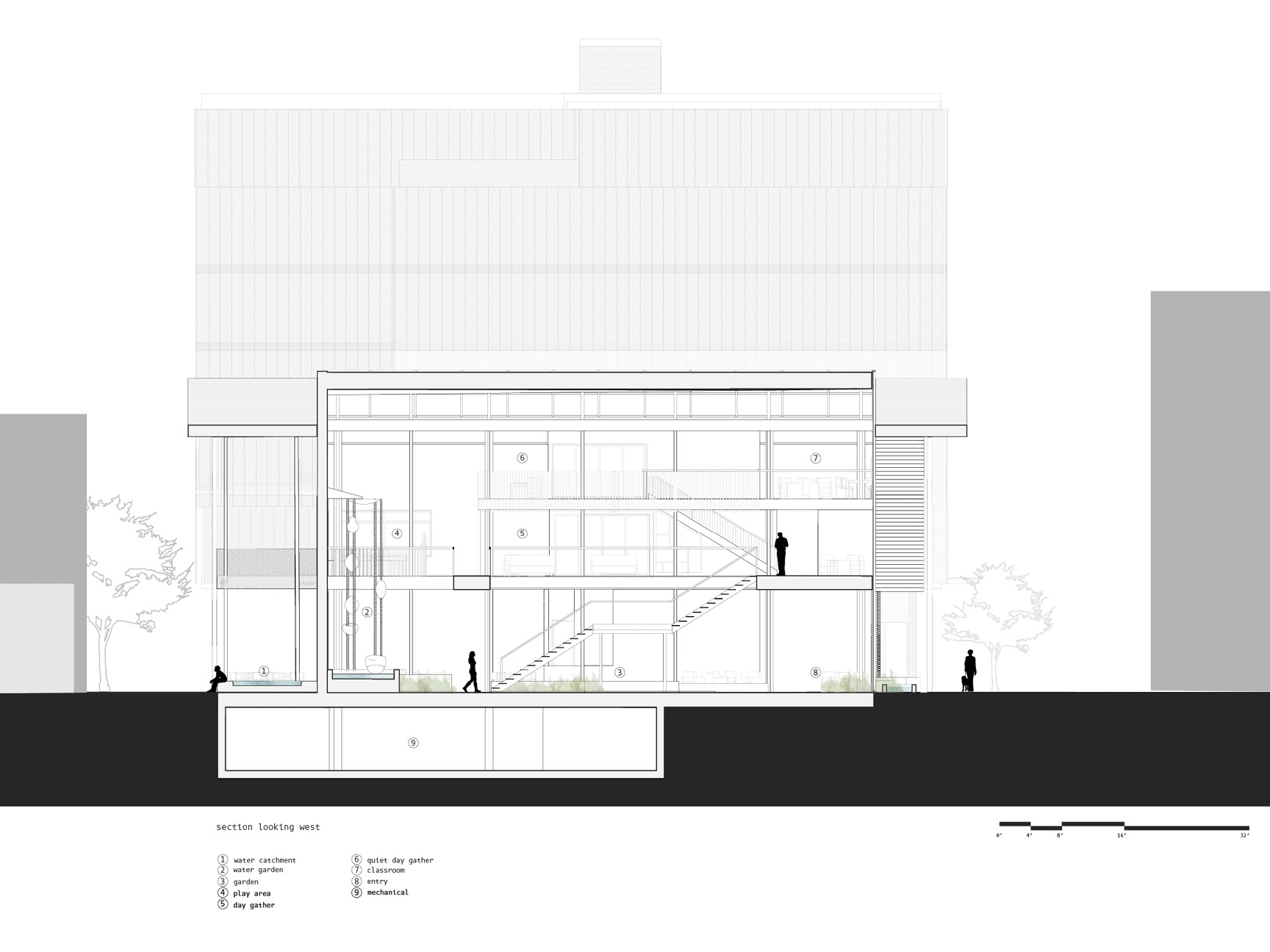

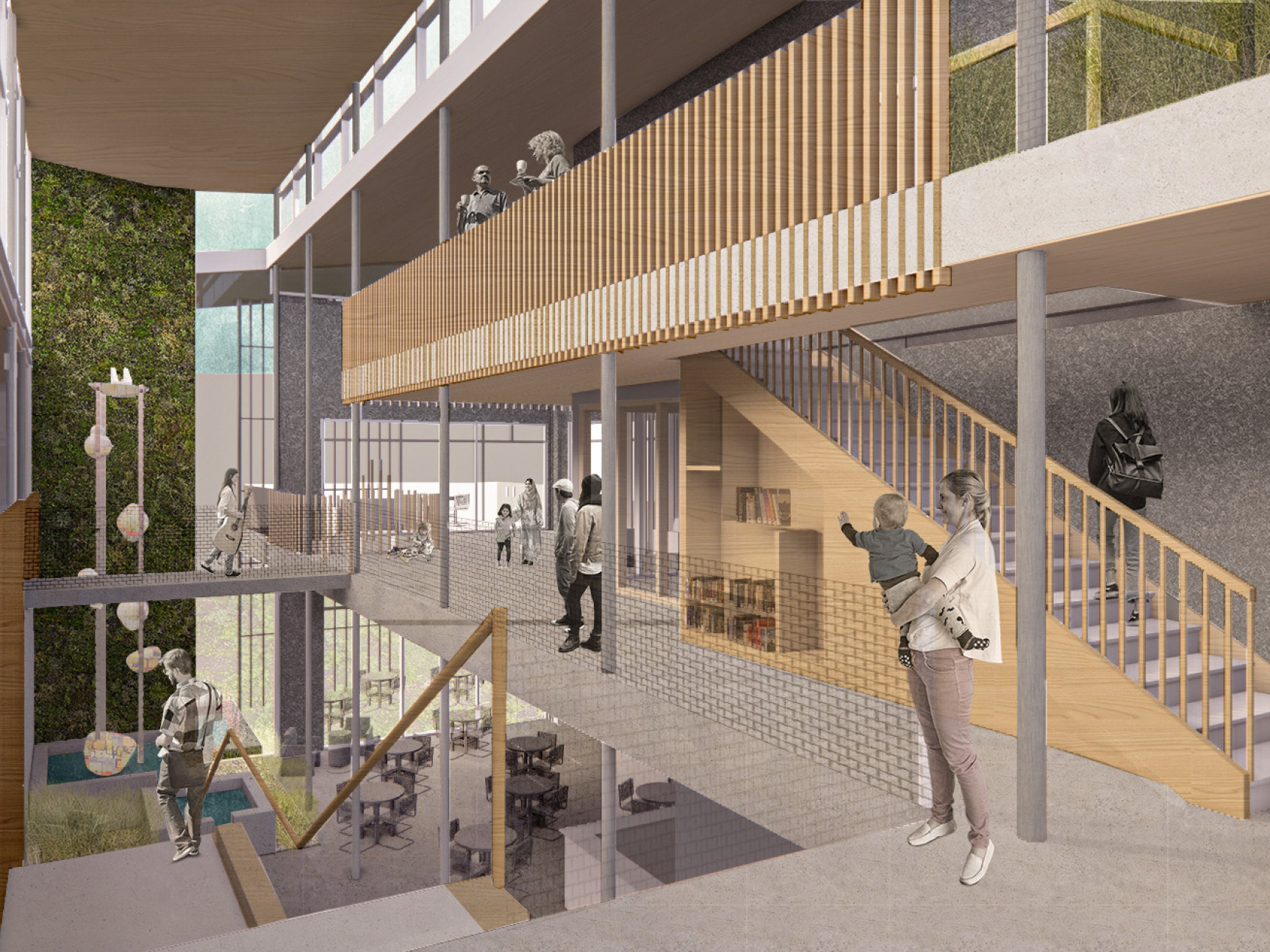
Design is for everyone. The Place for People Experiencing Homelessness’ (the PPEH)
mission is to provide a respite for people experiencing homelessness by
fostering joy, belonging, and a sense of renewal for all who enter. Inspired by
the long and life-giving tradition of water as an essential, yet often
undervalued resource, the PPEH is organized around a central water garden.
Celebrating the spirit of renewal, the central water garden acts as a vertical collector
of gathering spaces, of daylight, and flowing water. The garden is embraced by
blocks of care where multifaceted support is provided—from laundry facilities
to hot meals to medical care. The blocks are nestled under an enveloping roof,
where its outstretched eaves welcome guests as an accommodating expression of
protection.
Focusing inward, the circulation and programmed spaces continuously relate to the central gathering garden, prioritizing the importance of gathering with one another in community and the joy it can nurture in our lives. Transparency and screening of the inner façade facing the garden vary in response to the need for privacy at each of the program spaces. The calming white noise of running water from the garden drifts through the space, adding an auditory layer of privacy and creating a retreat from the stressful and chaotic conditions of life outside the PPEH’s walls.
Focusing inward, the circulation and programmed spaces continuously relate to the central gathering garden, prioritizing the importance of gathering with one another in community and the joy it can nurture in our lives. Transparency and screening of the inner façade facing the garden vary in response to the need for privacy at each of the program spaces. The calming white noise of running water from the garden drifts through the space, adding an auditory layer of privacy and creating a retreat from the stressful and chaotic conditions of life outside the PPEH’s walls.
Additionally, quieter spaces are in the mezzanine, overlooking the more
open communal program spaces below. Material choices and environmental control
systems are also designed to promote a healthy and nurturing space, including
the incorporation of natural materials for finishes, ample ventilation, and an
additional air purification system. Recognizing the important act of renewal
and appreciating the water intensive nature of many of the institution’s
facilities, the building employs an extensive rainwater collection and reuse
network—where rainwater supplements irrigation, showers, and laundry
facilities, in addition to a greywater recycling network.
While the PPEH cannot solve the crisis of homelessness on its own, the institution is committed to providing support to each unique guest within a space designed to foster rejuvenation, prioritize the life affirming act of gathering together, and makes space for joy — an essential component of embracing our collective humanity.
While the PPEH cannot solve the crisis of homelessness on its own, the institution is committed to providing support to each unique guest within a space designed to foster rejuvenation, prioritize the life affirming act of gathering together, and makes space for joy — an essential component of embracing our collective humanity.